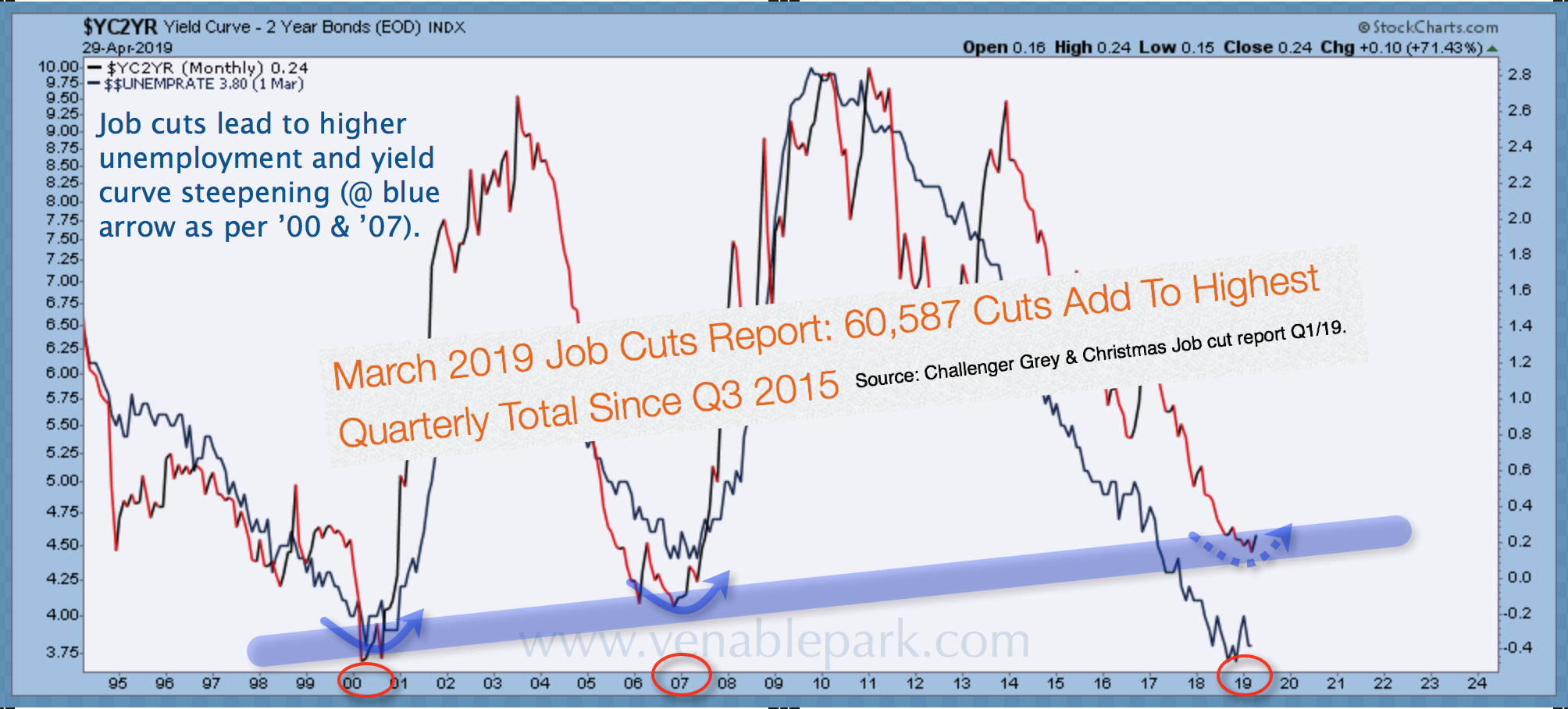The US Challenger jobs report this week offered some insight into our economic cycle as well as ongoing upheaval in the energy and automotive sector. US job cuts in the first quarter were 190,410, 10.3% higher than in the final quarter of 2018 and 35.6% higher than the same quarter last year. This was the highest quarterly total since the first quarter of 2015 and the highest first-quarter total since 2009 (during the last recession).
Notably the economically sensitive and consequential auto and energy sectors were the largest job cutters in the midst of mean-reverting auto sales and “consumer demand for more efficiency”. See Challenger Q1 Job Cuts Report:
“Both Auto and Energy companies are pivoting in response to advances in technology and consumer demand for more efficiency. Companies in these sectors are attempting to attract talent who can compete with tech companies, like Apple and Tesla, which are beginning to compete in this space,” said Challenger.
The majority of cuts this year are due to “restructuring;” 49,868 cuts have been announced due to this reason. Bankruptcy claimed another 40,218 this year, a 33.8% increase over the first quarter of last year. Another 27,380 cuts were due to plant, unit, or store closings, 104.7% higher than the 13,374 cuts due to closings through this point last year.
“Several indications, such as the number of companies filing for bankruptcy or closing operations, suggest we’re heading for a downturn. The recent proposal to close the southern border adds to the uncertainty and may contribute to more cuts as companies try to adapt,” said Challenger.
As noted in my partner Cory Venable’s chart below, a cyclical upturn in unemployment (blue line below since 1994) is overdue and appears to be underway since 2018. If that is the case, economic weakness will continue to spread and short-term interest rates move lower in the months ahead, re-steepening the ten minus two-year Treasury yield spread (red line below) as happened heading into both the 2001 and 2008 recessions.



